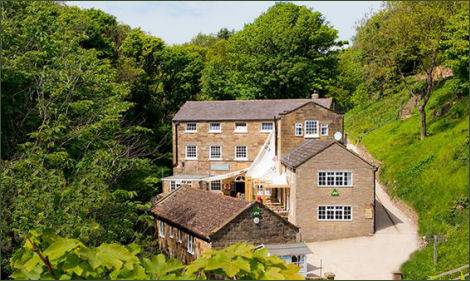Boggle Hole
OS grid reference:-
Situated about a mile to the south of Robin Hood’s Bay along the ‘Cleveland Way’ Long Distance Footpath, Boggle Hole, is one of the Yorkshire Coast's little known, hidden gems. It consists of a sheltered bay in front of the old converted Watermill, now a youth hostel and was once a notorious smugglers’ haunt. The clifftop path affords stunning views of Robin Hood’s Bay, which sweeps in a graceful curve from the promontory of North Cheek, also called Ness Point, to South Cheek or The Old Peak.


Boggle Hole is a small cove with uniquely curved-out hollows, worn away by the action of the sea and lies at the foot of a wooded valley. The curious name derives from boggle, or goblin, which legend states are said to haunt the slopes.
A Boggle is the local northern dialect name for a hobgoblin, the mischievous ‘little people’ that were thought to live in caves along the coast as well as the more remote corners of the Moors. Local people used to believe that Boggles had healing powers, and would sometimes bring their sick children to holes, called “hob holes”, where Boggles were thought to live, in the hope that they would be cured.
In times past, smugglers used to land and hide their contraband in the caves at Boggle Hole. Now the haunt of geologists and fossil hunters, this rocky foreshore is a fascinating place to explore. The bay is site of special scientific interest (SSSI) where a a range of trace fossils can be found, including some superb ammonites. The beach is dog friendly, has rock pools and is sand on one side and pebbles on the other.
Directions
Boggle Hole can be reached either by taking the narrow road through Fyling Park or from south of Fylingthorpe. The road is not suitable for large vehicles, but there is a car park near Boggle Hole and it is a short walk to the shore.
